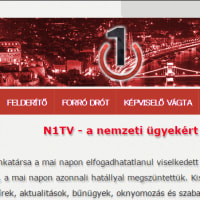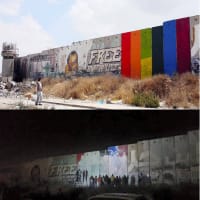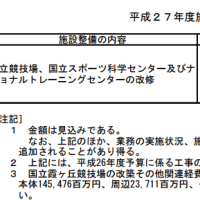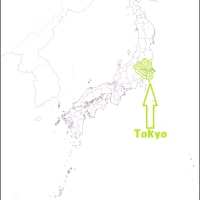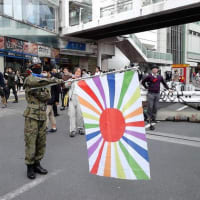今回は、『ダーティー・ツーリズム(dirty tourism)』に関する小話。
世の中には色んな観光ツアーが存在する。
その中には、スラム街や孤児院・ゴミの山などを観光目的にするという妙に生臭い(?)モノもあるとか。
これに関しては、Days Japan が2015年4月号でダヴィッド・レンヘル(David Rengel)氏の撮影した画像を用いて紹介している。
↓Days Japan による記事の紹介Tweet。
---- 引用以上 ---
DAYS JAPAN
@@DAYS_JAPAN
DAYS JAPAN4月号【観光利用される子どもたち『ダーティー・ツーリズム』】
孤児院やスラム街などを訪問する「貧困ツアー」が人気を集めており、ツアー業者の利益のために極貧の中で生きる子どもたちが見世物にされている

2015年3月24日21:24(多分JST)
---- 引用以上 ----
で、先月中旬、Daily MailがRengel氏へのインタビューなどを元にこのダーティー・ツーリズムに関する記事を書いていた。
・Shocking images show horror of child labour at toxic Cambodia rubbish site... and the tourists who visit to photograph them(2015年3月16日 dailymail.co.uk)
↑の記事は、Rengel氏が撮影した画像をこれでもかと公開している。
ゴミの山に立ちつくす少年少女、そんなゴミの山の様子を撮影する日本からの観光客・・・。
Daily Mailの記事で紹介されてるRengel氏のコメントは、ダーティ・ツーリズムが抱えてる闇の底深さを示すものだった。
ちうわけで、2015年3月16日分 dailymail.co.uk『Shocking images~』から中盤部分を(略)
---- 以下引用 ----
(中略)
Rengel explained: 'I went to Siem Reap, where my colleague and friend Omar Havana, a freelance photographer for Getty images, had been developing a project over various years. He gave me the contacts I needed to enter the site.'
'While I was taking photos to demonstrate the realities of child labour, I realised tourists were arriving to visit, sometimes in buses and other times in tuk-tuks, Cambodian taxis, I thought it was horrible, and it should be reported.
'In that moment, I changed my point of view and instead decided to report on the practice of tourism as one of the causes of slave labour, including child labour.'
While spending time talking to the 200 or so people living at the site, more of 50 of whom are children, Rengel realised the rubbish dump was being offered as an alternative kind of tour to the usual temple visits.
He told MailOnline Travel: 'What disgusted me, what I didn't understand and what I don't think is understandable is why these tourist visit places where children work, or visit orphanages where children have lost their parents.
'It seems awful to me that tourists and people with money take part in this, from their position of privilege, show such contempt towards the inhabitants of the countries they visit and towards their human rights.
'What is the most contemptuous, what we shouldn't allow under any circumstances, is that they use children like a some kind of entertainment, violating all their human rights in the process.'
(以下略)
---- 引用以上 ----
ゴミの山を観光地にするってのは、ある意味観光が持ってる性質を極限まで打ち出したものなのかもしれん。
その辺に関しては、今福 龍太(Ryu-ta IMAFUKU)氏は、『クレオール主義(1991)』第4章『ファンタジーワールドの誕生』で、映画『カンニバル・ツアーズ(Cannibal Tours)』(監督;デニス・オルーク:1987)で描かれている「食人族ツアー」の参加者と現地の人達の関係に触れていた。
その上で、観光がどういう意味を持ってるのかについて説明していた。
ちうわけで、『クレオール主義』第4章『ファンタジーワールドの誕生』からP.80-82(ちくま文庫版)の一部を(略)
---- 以下引用 ----
(中略)
オルークの『カンニバル・ツアーズ』がとらえた映像は、過剰な編集をおさえたその即物的ともいえる眼差しによって、現代の西欧的プリミティヴィズムが押し出す「観光旅行」が、どのようなかたちで権力のシステムの一環を担っているかを見事に示している。
すでに<場所>についての考察のなかで見てきたように、「未開文化」とは、まさにそれを破壊・変容させた張本人である植民地主義の想像力がうみだした、一種のノスタルジックな憧憬の対象であった。
その後、人類学あるいは民族誌と呼ばれる学問分野が、こんどは「未開文化」を科学的・客観的な記述の対象に仕立て上げることでこの概念の延命を図ってきたことはいうまでもない。
しかし現在の民族誌的実践が示すように、もはや人類学ですらこのシミュラクルな空間となりかけた「未開文化」の現在を純粋に客観的に見るというナイーブな視線を持ち続けることはできなくなった。
その意味では、現代社会に置いて「観光」こそ、人類学に代って、この「プリミティヴ」な世界を一種の憧憬をもって見つめるための最後の拠点となっている。
そしてまさにそのために、観光は永久に「プリミティヴ」を創造しつづけることを運命づけられてしまった。
存在しない「未開文化」は、いまや観光客のために新たに、そして独占的に創りだされているというわけなのである。
植民地主義を起点に、人類学、観光というかたちで受け継がれてきた西欧世界のプリミティヴなものへの認識の変遷を透視することで、帝国主義的な想像力が現代まで引きずっている一つの大きな言説の流れが見えてくる。
そしてその流れの中で、「観光」と「人類学」はちょうど、権力の空間的外延化を計ろうとしたコロニアリズムという巨大な西欧精神のシステムが時代を隔てて産みおとした、奇妙な一卵性双生児でもあったのである。
だが、オルークの映像の投げかけるメッセージは、もう少し微視的な形で現代の「旅」あるいは「観光」というものの特異な姿を描き出してもいる。
その一つは、現代において「旅」は場所の間に横たわる文化的「差異」の存在を一つの前提条件として行われている、という事実についてだ。
観光客の行動が示しているように、彼らはジャングルの奥地で何か得体の知れない未知のものに出会うことを期待してやってきたのではけっしてない。
その土地の地勢も、風土も、人間たちの暮らしも、あらゆるメディアの情報とともに、すでに彼らの想像力の中に書きこまれてしまっている。
彼らは、出発する前にすでにつくりあげられている安定した「差異」を証明する様々な記録や証拠を発見・収集しようとする。
写真や民芸品といったものは、まさにそうした発見の記録や証拠品として持ち帰られるものなのであり、だからこそ、それらは観光客にとって何よりも不可欠の関心ごととなる。
(以下略)
----引用以上 ----
無論、あのゴミの山は現代が生み出した負の遺産である。
しかし、ダーティー・ツーリズムで訪れた人達がそこでゴミを集める人達を見つめる視線は、今福氏が指摘した観光と旅の性質を見事なまでに反映している。
なにせ、(Daily Mailの記事で紹介されてた画像にも映ってるが)ゴミの山を前にひたすら写真を撮りまくるわけでさ・・・。
なお、今回Rengel氏がやった手法は、素人が迂闊に手を出すべきでない模様。
・Dirty tourism in Cambodia(2015年3月21日 phnompenhpost.com)
以下、2015年3月21日分 phnompenhpost.com『Dirty tourism~』から長くなるが中盤部分を(略)
---- 以下引用 ----
(中略)
But photojournalist Thomas Cristofoletti, co-founder of the Cambodia-based Ruom Collective of journalists, said he was uneasy with amateur photographers seeking out grim situations.
“I don’t enjoy going to see people suffering – that’s not something I like to do, and I don’t understand how people could pay to have this kind of experience,” he said.
While he said citizen journalism had its place, particularly during sudden situations requiring quick action, photographers should generally have professional backgrounds before attempting to navigate the ethical dilemmas of bearing witness to poverty.
“You need preparation and [to] follow some kind of ethics to be able to document the reality of a problem,” he said.
James Sutherland, international communications coordinator at NGO Friends International, which works at the Anlong Pi dumpsite, said the distinction between legitimate reportage and exploitation was not always clear.
“There’s a very fine line indeed here about exploiting the people you’re supposedly trying to help by reporting the issue,” he said, adding that he has concerns about photojournalists’ effects on poor communities and condemns organised tours entirely.
In one instance, Sutherland saw an image of the Anlong Pi dumpsite with exaggerated red colouring that gave the area a hellish glow.
Terrible as the site may be, he found the manipulation distasteful.
“[Scavengers] are not objects, they’re not another piece in your scenario,” he said.
Sutherland also said that informed consent can be tricky to obtain when children are involved.
“Children are just fascinated by the idea that someone wants to take their picture – they will have a look at it, have a laugh with it and joke about it, but they have no idea what’s going to happen with that image,” he said.
Cristofoletti said that, while such ethical problems are well known among photographers, he feared amateurs would not have the professional background to make good choices.
“It’s not ethical to take pictures of minors without consent of the parents, probably something tourists don’t know,” said Cristofoletti, adding that in certain instances he has opted to obscure the identities of children even with parental consent.
“You don’t need to see the faces to understand the reality – I can still try to preserve the dignity of the minor without exposing him to the public. That’s something you know because you’re professional, because you’re doing this job and you know the rules.”
(以下略)
---- 引用以上 ----
取材者と観光客は紙一重ってか?(違)
世の中には色んな観光ツアーが存在する。
その中には、スラム街や孤児院・ゴミの山などを観光目的にするという妙に生臭い(?)モノもあるとか。
これに関しては、Days Japan が2015年4月号でダヴィッド・レンヘル(David Rengel)氏の撮影した画像を用いて紹介している。
↓Days Japan による記事の紹介Tweet。
---- 引用以上 ---
DAYS JAPAN
@@DAYS_JAPAN
DAYS JAPAN4月号【観光利用される子どもたち『ダーティー・ツーリズム』】
孤児院やスラム街などを訪問する「貧困ツアー」が人気を集めており、ツアー業者の利益のために極貧の中で生きる子どもたちが見世物にされている

2015年3月24日21:24(多分JST)
---- 引用以上 ----
で、先月中旬、Daily MailがRengel氏へのインタビューなどを元にこのダーティー・ツーリズムに関する記事を書いていた。
・Shocking images show horror of child labour at toxic Cambodia rubbish site... and the tourists who visit to photograph them(2015年3月16日 dailymail.co.uk)
↑の記事は、Rengel氏が撮影した画像をこれでもかと公開している。
ゴミの山に立ちつくす少年少女、そんなゴミの山の様子を撮影する日本からの観光客・・・。
Daily Mailの記事で紹介されてるRengel氏のコメントは、ダーティ・ツーリズムが抱えてる闇の底深さを示すものだった。
ちうわけで、2015年3月16日分 dailymail.co.uk『Shocking images~』から中盤部分を(略)
---- 以下引用 ----
(中略)
Rengel explained: 'I went to Siem Reap, where my colleague and friend Omar Havana, a freelance photographer for Getty images, had been developing a project over various years. He gave me the contacts I needed to enter the site.'
'While I was taking photos to demonstrate the realities of child labour, I realised tourists were arriving to visit, sometimes in buses and other times in tuk-tuks, Cambodian taxis, I thought it was horrible, and it should be reported.
'In that moment, I changed my point of view and instead decided to report on the practice of tourism as one of the causes of slave labour, including child labour.'
While spending time talking to the 200 or so people living at the site, more of 50 of whom are children, Rengel realised the rubbish dump was being offered as an alternative kind of tour to the usual temple visits.
He told MailOnline Travel: 'What disgusted me, what I didn't understand and what I don't think is understandable is why these tourist visit places where children work, or visit orphanages where children have lost their parents.
'It seems awful to me that tourists and people with money take part in this, from their position of privilege, show such contempt towards the inhabitants of the countries they visit and towards their human rights.
'What is the most contemptuous, what we shouldn't allow under any circumstances, is that they use children like a some kind of entertainment, violating all their human rights in the process.'
(以下略)
---- 引用以上 ----
ゴミの山を観光地にするってのは、ある意味観光が持ってる性質を極限まで打ち出したものなのかもしれん。
その辺に関しては、今福 龍太(Ryu-ta IMAFUKU)氏は、『クレオール主義(1991)』第4章『ファンタジーワールドの誕生』で、映画『カンニバル・ツアーズ(Cannibal Tours)』(監督;デニス・オルーク:1987)で描かれている「食人族ツアー」の参加者と現地の人達の関係に触れていた。
その上で、観光がどういう意味を持ってるのかについて説明していた。
ちうわけで、『クレオール主義』第4章『ファンタジーワールドの誕生』からP.80-82(ちくま文庫版)の一部を(略)
---- 以下引用 ----
(中略)
オルークの『カンニバル・ツアーズ』がとらえた映像は、過剰な編集をおさえたその即物的ともいえる眼差しによって、現代の西欧的プリミティヴィズムが押し出す「観光旅行」が、どのようなかたちで権力のシステムの一環を担っているかを見事に示している。
すでに<場所>についての考察のなかで見てきたように、「未開文化」とは、まさにそれを破壊・変容させた張本人である植民地主義の想像力がうみだした、一種のノスタルジックな憧憬の対象であった。
その後、人類学あるいは民族誌と呼ばれる学問分野が、こんどは「未開文化」を科学的・客観的な記述の対象に仕立て上げることでこの概念の延命を図ってきたことはいうまでもない。
しかし現在の民族誌的実践が示すように、もはや人類学ですらこのシミュラクルな空間となりかけた「未開文化」の現在を純粋に客観的に見るというナイーブな視線を持ち続けることはできなくなった。
その意味では、現代社会に置いて「観光」こそ、人類学に代って、この「プリミティヴ」な世界を一種の憧憬をもって見つめるための最後の拠点となっている。
そしてまさにそのために、観光は永久に「プリミティヴ」を創造しつづけることを運命づけられてしまった。
存在しない「未開文化」は、いまや観光客のために新たに、そして独占的に創りだされているというわけなのである。
植民地主義を起点に、人類学、観光というかたちで受け継がれてきた西欧世界のプリミティヴなものへの認識の変遷を透視することで、帝国主義的な想像力が現代まで引きずっている一つの大きな言説の流れが見えてくる。
そしてその流れの中で、「観光」と「人類学」はちょうど、権力の空間的外延化を計ろうとしたコロニアリズムという巨大な西欧精神のシステムが時代を隔てて産みおとした、奇妙な一卵性双生児でもあったのである。
だが、オルークの映像の投げかけるメッセージは、もう少し微視的な形で現代の「旅」あるいは「観光」というものの特異な姿を描き出してもいる。
その一つは、現代において「旅」は場所の間に横たわる文化的「差異」の存在を一つの前提条件として行われている、という事実についてだ。
観光客の行動が示しているように、彼らはジャングルの奥地で何か得体の知れない未知のものに出会うことを期待してやってきたのではけっしてない。
その土地の地勢も、風土も、人間たちの暮らしも、あらゆるメディアの情報とともに、すでに彼らの想像力の中に書きこまれてしまっている。
彼らは、出発する前にすでにつくりあげられている安定した「差異」を証明する様々な記録や証拠を発見・収集しようとする。
写真や民芸品といったものは、まさにそうした発見の記録や証拠品として持ち帰られるものなのであり、だからこそ、それらは観光客にとって何よりも不可欠の関心ごととなる。
(以下略)
----引用以上 ----
無論、あのゴミの山は現代が生み出した負の遺産である。
しかし、ダーティー・ツーリズムで訪れた人達がそこでゴミを集める人達を見つめる視線は、今福氏が指摘した観光と旅の性質を見事なまでに反映している。
なにせ、(Daily Mailの記事で紹介されてた画像にも映ってるが)ゴミの山を前にひたすら写真を撮りまくるわけでさ・・・。
なお、今回Rengel氏がやった手法は、素人が迂闊に手を出すべきでない模様。
・Dirty tourism in Cambodia(2015年3月21日 phnompenhpost.com)
以下、2015年3月21日分 phnompenhpost.com『Dirty tourism~』から長くなるが中盤部分を(略)
---- 以下引用 ----
(中略)
But photojournalist Thomas Cristofoletti, co-founder of the Cambodia-based Ruom Collective of journalists, said he was uneasy with amateur photographers seeking out grim situations.
“I don’t enjoy going to see people suffering – that’s not something I like to do, and I don’t understand how people could pay to have this kind of experience,” he said.
While he said citizen journalism had its place, particularly during sudden situations requiring quick action, photographers should generally have professional backgrounds before attempting to navigate the ethical dilemmas of bearing witness to poverty.
“You need preparation and [to] follow some kind of ethics to be able to document the reality of a problem,” he said.
James Sutherland, international communications coordinator at NGO Friends International, which works at the Anlong Pi dumpsite, said the distinction between legitimate reportage and exploitation was not always clear.
“There’s a very fine line indeed here about exploiting the people you’re supposedly trying to help by reporting the issue,” he said, adding that he has concerns about photojournalists’ effects on poor communities and condemns organised tours entirely.
In one instance, Sutherland saw an image of the Anlong Pi dumpsite with exaggerated red colouring that gave the area a hellish glow.
Terrible as the site may be, he found the manipulation distasteful.
“[Scavengers] are not objects, they’re not another piece in your scenario,” he said.
Sutherland also said that informed consent can be tricky to obtain when children are involved.
“Children are just fascinated by the idea that someone wants to take their picture – they will have a look at it, have a laugh with it and joke about it, but they have no idea what’s going to happen with that image,” he said.
Cristofoletti said that, while such ethical problems are well known among photographers, he feared amateurs would not have the professional background to make good choices.
“It’s not ethical to take pictures of minors without consent of the parents, probably something tourists don’t know,” said Cristofoletti, adding that in certain instances he has opted to obscure the identities of children even with parental consent.
“You don’t need to see the faces to understand the reality – I can still try to preserve the dignity of the minor without exposing him to the public. That’s something you know because you’re professional, because you’re doing this job and you know the rules.”
(以下略)
---- 引用以上 ----
取材者と観光客は紙一重ってか?(違)












